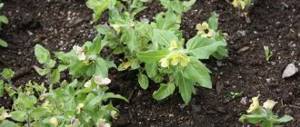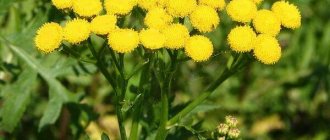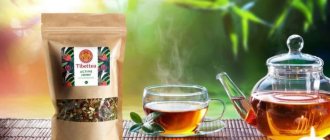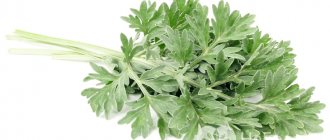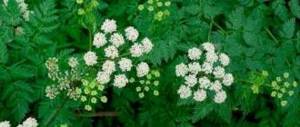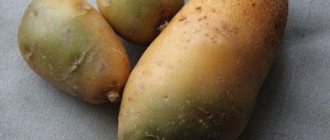All the confusion with wolfberries is caused by goji sellers. Indeed, in English, Lycium barbarium or goji, if we take the commercial name, is called wolfberry, which, as you understand, does not make it poisonous. It is because of this term that some people manage to find a simpler, cheaper berry with the same name. And what they find is a poisonous plant with rather attractive currant-like berries. Wolfberry, or, to take its popular name, privet, is a shrub widespread in the Caucasus, Moldova, and Ukraine. Wolf's bast is a small shrub with bright red fruits. It is these plants that, due to the similarity of names, can be “confused” with goji.
Where does the name “Wolf Berries” come from?
It turns out that there are quite a lot of plants with poisonous berries in nature and they are all called wolf plants, in honor of such a predatory and death-bringing animal as the wolf. The fruits of the following plants are popularly called wolfberries:
- Privet, also known as wolfberry or wolf's bast
- Buckthorn brittle
- Voronets
- Elder
- Crow's eye
- Belladonna
- Honeysuckle
- Nightshade
- Boxthorn
- Whitewing
- Snowberry
- Maiden grapes
- May lily of the valley
And this is not the entire list of poisonous plants.
Plants of the genus Privet are shrubs or small trees, are evergreen or semi-evergreen, and belong to the olive family. This is a poisonous plant, the fruits of which are popularly called “wolf berry”. It poses a danger to humans because it contains the substance solanine, which causes poisoning if it enters the stomach and even the skin. However, the shrub is a great success among gardeners. Its plantings are often used as hedges.
Recipes from the archives of traditional healers
A decoction of wolf bast flowers is used orally, 5-6 drops 3 times a day. A potion is prepared using 2 g of dried daphne flowers and 20 ml of water. The composition is boiled over low heat. After cooling, the infusion is brought to a volume of 250 ml. In addition, the inflorescences are often ground into a powder mass. The resulting mixture is used for severe toothache. A small amount of the product is rubbed into the gums, followed by rinsing the mouth with boiled water.
But a decoction of wolfberry roots is prepared according to this recipe:
- 4 g of roots pour 1 tbsp. boiling water;
- simmer in a water bath for about half an hour;
- leave to cool (15 minutes);
- filter
Wolfberry tea is purchased only from trusted manufacturers. Chinese companies have learned to process the product in such a way as to reduce its toxicity. Making such a drink yourself is life-threatening.
Take a decoction of the roots 2 times a day, 1 tsp. as a strong sleeping pill. Oncological diseases of the stomach are treated with infusion of wolfberry. Dried fruits (2 g) are infused in 100 ml of distilled water for 8 hours. Dosage: 5 ml/1 time per day.
To obtain wolfberry tincture:
- take 1 g of fruit;
- pour 100-125 ml of alcohol (70%);
- leave for 7 days;
- filtered.
Typically, a homeopathic remedy is recommended to be taken in diluted form. In 1 tbsp. l. Just 2 drops of alcohol tincture are added to water and consumed 3 times a day. You can buy this product at a pharmacy.
For rheumatism, neuralgia, and gout, compresses are made from the mixture:
- 20 ml tincture of wolf bast;
- 50 g Vaseline;
- 50 g lanolin (animal fat).
Before going to bed, rub the most painful areas with the prepared ointment. Baths using tinctures are also effective. For 1 liter of water add 1 tbsp. l. medications. The duration of the procedure is 7-10 minutes.
The proposed recipes are also applicable to other representatives of the wolfberry group.
Experts do not recommend self-administered therapy. It is better to consult a doctor and be under the supervision of a specialist during treatment. The slightest deviation from the norm can be fatal.
Description and types of common privet
This shrub is deciduous and grows well in shaded areas, usually in oak undergrowth, often reaching a height of 5 meters. The leaves are leathery, oblong, sometimes lanceolate, dark on the outside and light on the back. The flowers are small, white, collected in inflorescences in the form of panicles about 6 cm long, the smell is sweet and intoxicating. It blooms for about 20 days, from June to mid-July. The fruits on the branches last until winter, since privet is a winter-hardy plant. Wolfberries are usually black in color with several seeds inside. In general, the shrub resembles lilac in appearance, but does not bloom as profusely and beautifully.
In nature, there are 10 varieties of common privet:
- pyramidal
- weeping
- golden
- evergreen
- yellowish
- yellow-fruited
- silver-variegated
- gray
- golden
- glaucous - white-edged
Healing properties
All parts of the bush contain harmful substances, among which the following are considered especially dangerous:
- mezereum resin - causes severe intestinal upset, and upon contact with the skin, blisters or redness;
- glycoside daphnin and coumarin - change the composition of the blood, leading to bleeding.
This fact is worth taking into account, but we must not forget that the plant has a lot of positive qualities. Although wolf's bast is a poisonous plant, it has good antiepileptic properties, acts as a sleeping pill and laxative, improves intestinal motility, and is endowed with analgesic and analgesic effects. Due to this, bast is often used to treat:
- skin diseases: eczema, irritation, herpes, lichen, erythema;
- headaches and toothaches;
- dysentery;
- epilepsy;
- paralysis;
- gout, neuralgia, radiculitis, rheumatism;
- pulmonary tuberculosis;
- malignant neoplasms of the pharynx, tumors of the uterus, mammary glands, and gastrointestinal tract;
- leukemia;
- jaundice;
- viral diseases: colds, sore throat, flu.
During treatment, do not forget about precautions. Otherwise, an overdose of wolfwort can lead to spasmodic pain, vomiting, burning in the digestive tract, skin rashes, fever, and the appearance of blood clots during urination. If you notice any of the symptoms, you should immediately call an ambulance. It is strictly forbidden to give bast-based medications to a child.
Distribution area and breeding methods
Common privet grows in the Caucasus, southern Ukraine, northern Moldova, northern Africa, Asia Minor, middle and southern Europe. The privet bush begins to produce berries only in the seventh year of life. Therefore, to obtain seeds, it is cultivated on an industrial scale. However, growing shrubs from seeds is a long and labor-intensive process. In gardening, the propagation method is often used using cuttings, layering or root suckers.
Snowberry
Snowberry is a low deciduous shrub that has an elegant appearance. Its pinkish flowers turn into spherical white fruits. The berries contain saponin, which has a toxic (irritating) effect on mucous membranes and skin.
Symptoms of snowberry poisoning:
- damage to the skin and mucous membranes when exposed externally - symptoms of inflammation and irritation - redness, swelling and pain;
- disruption of the mucous layer of the alimentary tract when eaten - weakness, vomiting and diarrhea, stomach pain, possible dizziness, confusion, even fainting.
The plant is especially dangerous for children.
Wolf berries - benefit or harm?
Privet has proven itself well as a means to destroy various agricultural pests. Infusions are prepared from the berries to combat Colorado potato beetles and other garden insects. Since the infusion is poisonous, when spraying it it is necessary to observe appropriate safety measures and produce it in the early stages of plant development, before the fruits are yet ripe.
In the old days, ordinary writing ink was produced from the black fruits of the privet. Currently, the bush is used as a living fence in gardens and vegetable gardens.
Like many other poisonous plants, wolfberry is used in traditional medicine recipes, especially in homeopathy, observing the correct dosage. Preparations based on various extracts from various parts of this plant are used to treat the following diseases and disorders:
- Diseases of the heart and blood vessels
- Kidney and liver diseases
- Nervous conditions and mental disorders
- Joint diseases
- Eye diseases
- Viral diseases
- Low immunity
- Noise in ears
- Early graying of hair
Traditional medicine also uses tinctures of various parts of this plant to treat diseases of the respiratory system, colds, and skin ailments.
Important! To avoid poisoning, self-medication with this plant is strictly prohibited!
Dereza vulgare (goji) - Chinese berry for weight loss
Goji is a non-poisonous plant native to China, and its berries have beneficial properties and are widely used in medicine. The fruits of wolfberry are very similar to barberry, have the same shape and color. The berry contains a huge amount of useful substances, such as:
- minerals (21 items);
- amino acids;
- The fruits contain B vitamins and a lot of vitamin C;
- beta-carotene;
- polysaccharides;
- iron;
- calcium;
- phosphorus;
- monosaccharides;
- selenium.
Chinese doctors recommend using goji berries as a multivitamin supplement to food. It is believed that wolfberry fruits slow down the aging process and can help fight diseases such as atherosclerosis, diabetes, and cancer. Chinese nutritionists add goji berries to the diet when losing weight, as they:
- Promote the production of growth hormone, due to which the body burns fat.
- The berry contains a small amount of carbohydrates and has a low calorie content, so it is allowed if you follow the Dukan diet.
- Wolfberry fruits prevent the formation of harmful free radicals, thereby relieving the stress the body endures during dieting.
- Fatty acids in the berry help speed up metabolism and remove toxins.
- Eating wolfberry fruits improves vision.
- Help eliminate dysfunction of the diuretic system.
It is impossible to guarantee 100% weight loss when eating goji berries. The rate of weight loss depends not only on the fruit, but also on the chosen diet, diet, menu, and individual characteristics of the body. On average, when eating berries, you lose 1-2 kilograms per week. During the diet, in addition to berries, you need to eat only healthy foods, reduce or completely abandon flour products. Physical activity and regular long walks in the fresh air affect the rate of weight loss. The fruits of wolfberry are brewed as tea and added to porridge.
What danger do wolf berries pose?
Since not only the berries, but all parts of the plant contain the poison solanine, this shrub must be handled with extreme caution. It is necessary to remember and warn children that privet is poisonous. Eating just 5 berries causes certain death. The shiny privet is especially poisonous. If you accidentally poison yourself with wolfberries, you must urgently take appropriate measures to cleanse your stomach and call an ambulance.
Symptoms of poisoning
- Severe burning sensation in the mouth
- Gagging
- Difficulty swallowing
- Stomach upset
- Stinging in the eyes and tearing
- Muscle cramps and general weakness
When a plant blooms, you should not lean close to it and inhale the aroma. If plant pollen enters the body when inhaled, this will also cause certain health problems in the form of irritation of the mucous membranes. If the plant juice gets on the skin, it can cause burns, ulcers and painful swelling.
What to do in case of poisoning
If someone unknowingly ate a poisonous privet berry, then first of all it is necessary to call an ambulance and then perform the following actions with the poisoned person:
- Induce vomiting and give the patient a large amount of water with a weak solution of potassium permanganate to drink.
- Give the patient activated carbon at the rate of 1 tablet per kilogram of weight.
- If possible, give the victim a cleansing enema.
- Convulsions and cardiac arrest are possible, so it is advisable to give the patient heart medications according to the instructions for use.
- After the procedures have been completed, place the person in a calm, horizontal position and wait for an ambulance.
- If the plant juice gets on your skin, you must immediately wash the affected area with any disinfectant or a weak solution of potassium permanganate.
Usually in all cases the victim is hospitalized and treated in a hospital.
So, the privet plant can be both useful and extremely dangerous for humans. When contacting it, it is necessary to comply with safety rules and a mandatory warning about its toxic properties, both for children and adults. Be attentive to the plants around you!
Beneficial features
Many poisonous plants also have beneficial properties, but you must know how to use them correctly, otherwise it is very dangerous to life and can lead to unpredictable consequences.
Privet has long been used in conventional and folk medicine to treat a variety of diseases:
- of cardio-vascular system;
- kidneys and liver;
- neuroses and mental disorders;
- eye;
- joints.
Due to their toxicity, shrub products are not used in official medicine, but are used exclusively in homeopathy. People use tinctures and decoctions from this plant to treat bronchitis, pneumonia, and colds. Privet has proven itself very well in folk medicine for the treatment of skin diseases.
Prepared tinctures and decoctions are never used internally; they are used for rubbing, rinsing, and lotions.
Plants are harvested in the summer - branches, leaves are collected, roots are dug up. In autumn you can harvest the fruits of the bush.
It is worth remembering that if any disease occurs, self-medication can be dangerous.
, especially if you prepare homemade tinctures and poisons from toxic plants. Remember that the plant contains a dangerous and toxic substance, which even in small doses leads to heart failure, cardiac arrest and death.
Red elderberry
Red wolfberry elderberry is a shrub up to three meters tall that bears clusters of shiny red fruits with a stone. Unripe berries and leaves are toxic.
Symptoms of red elderberry poisoning:
- weakness, headache and dizziness;
- irritation of the mucous membrane of the throat;
- abdominal pain with nausea, vomiting and diarrhea;
- intense cyanotic (blue) tint of the mucous membranes;
- difficulty breathing on exhalation and shortness of breath;
- sometimes there are convulsions;
- tachycardia with transition to bradycardia (decrease in heart rate) until the development of heart failure.
